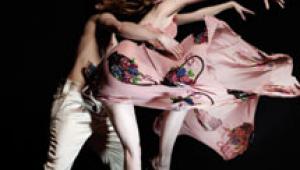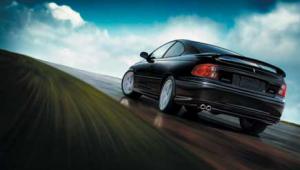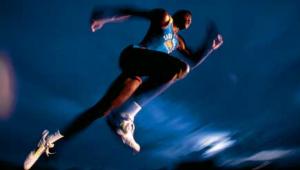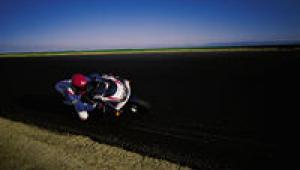Action Photography Page 2
| Shooting Techniques There are two basic ways to deal with an action subject: freeze its motion by shooting at a fast shutter speed, or blur it by shooting at a slower shutter speed. How fast a shutter speed do you need to freeze a moving subject, and how slow a shutter speed do you need to appropriately blur one? That depends on the speed of the subject, its distance from the camera, its direction of travel, and the focal length of the lens you're using. The faster the subject, the closer it is to the camera, and the longer the focal length, the faster the shutter speed required to "freeze" its motion. A subject moving directly across the field of view (from left to right or vice versa) will require a faster shutter speed than one moving directly toward or away from the camera at the same speed. The best way to learn the best shutter speeds to use for a given subject is to try different shutter speeds, and keep notes. Then look at your pictures and your notes, and see which shutter speed(s) produced the results you like best. As a very general rule, shutter speeds of 1/1000 or faster will freeze most sports action, and shutter speeds of 1/15 or slower will blur it. Shutter speeds in-between (which include the whole range on many point-and-shoot cameras) might or might not freeze action subjects—it depends on the subject and what it's doing. There's a very effective way to show motion and have the subject appear sharp: Use a slow shutter speed and pan the camera to track the subject while you shoot. Stand facing the spot where you want to shoot the subject, and rotate your body from the waist up to point the camera toward the approaching subject (keep your feet firmly planted). Smoothly move the camera to follow the subject, so that the subject remains in one spot in the viewfinder. Gently trip the shutter as the subject reaches the desired spot, and continue to track the subject for a beat—don't stop panning as you trip the shutter. With this technique, you can get a sharp image of the moving subject, while the slow shutter speed really blurs the now-"moving" background. The effect will really emphasize the subject's speed. An effective variation with subjects such as runners, bicyclists, basketball players and the like is to mount the camera on a tripod and shoot at a slow shutter speed to partially blur their motion. Experiment with different shutter speeds, starting with 1/30, and try panning with the subject. You'll get some interesting images, with arms and legs blurred more than the bodies. Like any camera technique, panning will seem difficult when you first try it, but you can master it with practice. And you do have to practice if you want to master it. Just reading about it won't do the trick. (Don't get discouraged if your first attempts don't "pan" out...you will get good at it with practice.) Another way to get a sharp image of an action subject at a slow shutter speed (especially handy in dim lighting conditions) is to shoot at the peak of the action—that point where a rising subject momentarily stops before starting back down. This offers an additional benefit, in that peak-action moments are often the most dramatic, too. Focusing on Action Subjects If you can't prefocus on the subject, you'll have to follow-focus on it as it moves. Birds in flight make great practice subjects—if you can track and focus on them, you can handle most moving subjects. Autofocusing can make action shooting easier. But you have to keep the subject in the AF target area in the viewfinder, or the camera won't autofocus on it. Practice (neighborhood kids and pets make good practice subjects), and you'll develop a knack for focusing on moving subjects, and accurately tracking them with the camera. The best AF mode for action shooting is continuous predictive AF (assuming your camera has it). With predictive AF, the camera takes successive focus readings of the moving subject, and from these, calculates its speed and direction. The camera then adjusts the focus for the subject's predicted position at the instant of exposure. This compensates for the distance the subject moves during the brief delay between the instant you fully depress the shutter button to make the exposure, and the instant the exposure is actually made. If your camera just has single-shot AF, you can still shoot action, but you'll get fewer sharp pictures, because the moving subject might not be at the same distance when the film is exposed as it was when the camera focused on it. When using predictive AF, track the subject with the camera, press the shutter button halfway down to activate the AF system, then press the shutter button all the way down as the "decisive moment" arrives. This gives the AF system time to acquire the subject and do its predictive calculations. If you just suddenly stab the shutter button at the instant you want to shoot, the AF system might not have enough time to focus on the subject before the exposure is made. |
- Log in or register to post comments














































